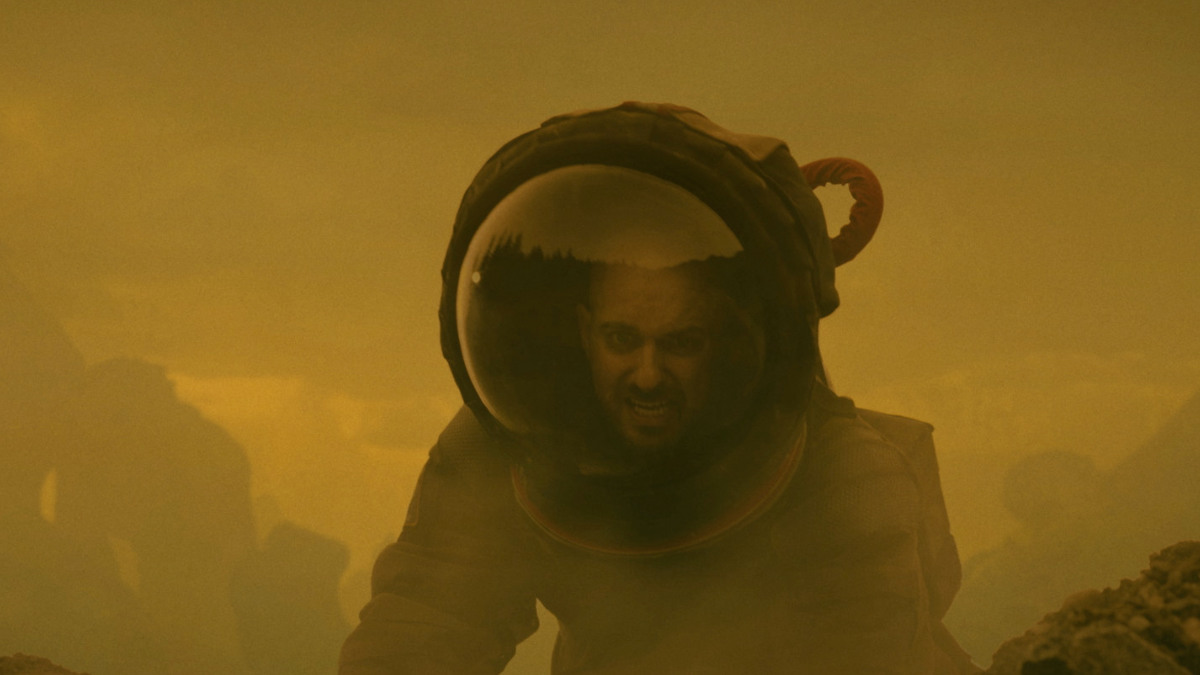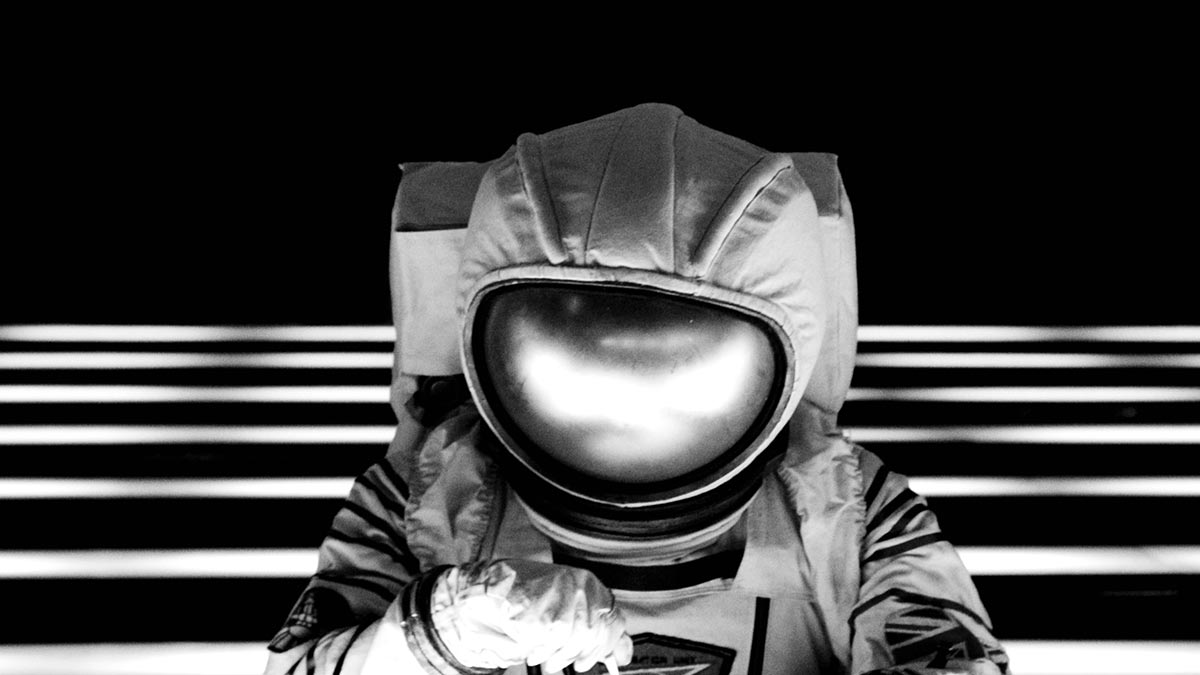While exploring an unknown place, an astronaut is confronted with fragmented memories that gradually unfold, forcing him to face his deepest fears and embrace a journey where reality and illusion intertwine.
Director Thomas Dubois takes viewers on a mesmerizing and thought-provoking journey in his sci-fi short film, “Solitary Waves.” In this immersive narrative, an astronaut embarks on an exploration of an unknown and enigmatic location, only to be confronted with a series of fragmented memories that blur the lines between reality and illusion. As these memories gradually unfold, the astronaut must confront his deepest fears and navigate a surreal landscape where the boundaries of perception are pushed to their limits.
“Solitary Waves” delves into the profound themes of memory, consciousness, and the interplay between perception and reality. Through clean and precise visuals and a gripping narrative, Dubois crafts an intriguing tale that challenges the viewer’s understanding of the astronaut’s journey and the mysteries that unfold along the way. This short film promises a mind-bending experience that will leave audiences pondering the nature of memory and the intricate web of emotions that shape our perception of the world around us.
Watch it on our YouTube Channel

“Solitary Waves» explores the theme of fragmented memories and the blurring of reality and illusion. What inspired you to delve into this concept in a sci-fi setting?
The sci-fi setting provided an interesting approach to magnify the concept of blurred memories. The idea of having an astronaut (who is isolated by nature), isolated in unknown territory and confronted with fragmented flashes of memories, served as a metaphor for our own individual journey we undertake in facing our past and memories.
The astronaut in the film appears to be on a journey of self-discovery. Can you discuss the character’s emotional and psychological evolution throughout the narrative?
In the astronaut’s mind, just as in ours, what seems real is often just an illusion shaped by our perceptions, memories, and fears. We all have our version of reality. It is what constitutes the basis of the evolution of this character. As the story progresses, the emotional weight of these memories grows to ultimately embracing them rather than running away from them. His realization represents his psychological evolution from denial and avoidance to acceptance and understanding.

The film’s title, «Solitary Waves,» suggests isolation and introspection. How did you use the setting and cinematography to convey the astronaut’s sense of solitude and self-reflection?
By its very nature, the forest evokes a sense of mystery, depth, and vastness, coupled with contrasting shots of intimate and dream-like memories; it effectively encapsulates the film’s exploration of isolation and the internal landscapes we all pass through. The cinematography choices are not there just to tell a story but to make the audience feel the profound solitude and introspection that the astronaut experiences.
Sci-fi often provides a unique platform for exploring philosophical and existential questions. What are the central themes or ideas you wanted to explore through this film?
One of the central pillars of the narrative is the exploration of memories. We often think of memories as static, unchanging recollections of our past, but they’re fluid, reshaping and redefining our present. The astronaut’s fragmented memories serve as a metaphor for the often disjointed and nonlinear way we remember our past. Sci-fi as a genre has always been familiar with the concept of the unknown, but instead of extraterrestrial beings or distant galaxies, «Solitary Waves» positions the forest as the unknown territory and the astronaut’s internal world as the ultimate uncharted domain.
The concept of memory and its impact on identity seems to be a key element in the film. How did you approach visualizing and portraying the astronaut’s fragmented memories on screen?
The juxtaposition between the reality of the astronaut’s present and the ethereality of his past was a key element. Memories were rendered in a way that set them apart from the present. Using soft focus, a shallower depth of field, and specific color grading allowed these recollections to appear sensitive and dreamlike, akin to how memories often feel—clear in emotion yet sometimes fuzzy in detail.

The blurring of reality and illusion can be a challenging narrative device. Can you discuss the creative choices you made to effectively convey this aspect of the story to the audience?
Embracing ambiguity was a conscious choice. Instead of giving all the answers, the narrative provided suggestive, layered sequences that encouraged viewers to create their own interpretations. The approach was focused less on a concrete delineation between the two realms and more on crafting an emotionally resonant journey. The guiding principle was to have emotional accuracy.
Sound and music often play a crucial role in sci-fi storytelling. How did you work with the sound team to enhance the atmosphere and narrative of the film?
I Engaged with Max Davidof-Grey (Music composer) early in the production. This allowed us to ensure that the music and sound design were not just post-production additives but intrinsically woven into the storytelling. Sound and Music are subjective. What resonates with one may not with another. Our work with Adam Lidbetter (Sound Designer) and Max was deeply iterative. Through multiple rounds of testing and feedback, we explored various sound motifs, ambient designs, and musical scores, refining them until they truly resonated with the film. The collaboration with Max and Adam was a deeply creative partnership.
The short film format presents certain limitations and opportunities. Can you talk about how you maximized the impact of the story within the constraints of a shorter runtime?
Crafting a compelling narrative within the limited timeframe of a short film is no small feat. From the beginning, ensuring that the story had a definitive arc—an introduction, climax, and a satisfying resolution/reveal was crucial. Given the time constraints, I often leaned on suggestion and implication rather than explicit exposition. It was structured to inspire imagination and encourage viewers to speculate and create their own story.
What do you hope audiences will take away from «Solitary Waves,» both in terms of its narrative and its exploration of memory and identity within a sci-fi context?
With «Solitary Waves,» my aim was to craft a narrative that resonates beyond the immediate viewing experience. At its heart, the film delves into the intricate interplay between memory and identity, two facets of the human psyche that are inseparable yet often in conversation. Memories aren’t just passive imprints of the past; they’re dynamic and evolving. The film emphasizes the fluidity of memories, illustrating how they can change over time, be reinterpreted, or even be influenced by our present emotions and experiences. I aimed to create a compelling cinematic experience that not only entertains but also encourages viewers to ponder their personal histories.
What are the short films that have inspired you to pursue this medium?
Even if not directly inspired by specific short films, the cinematic approaches and philosophies of Gareth Edwards, Denis Villeneuve, and Bi Gan were on mind while working on Solitary waves. While none of these directors may be known mainly for their short films, their cinematic visions have profoundly impacted how I perceive and approach the art of storytelling.




